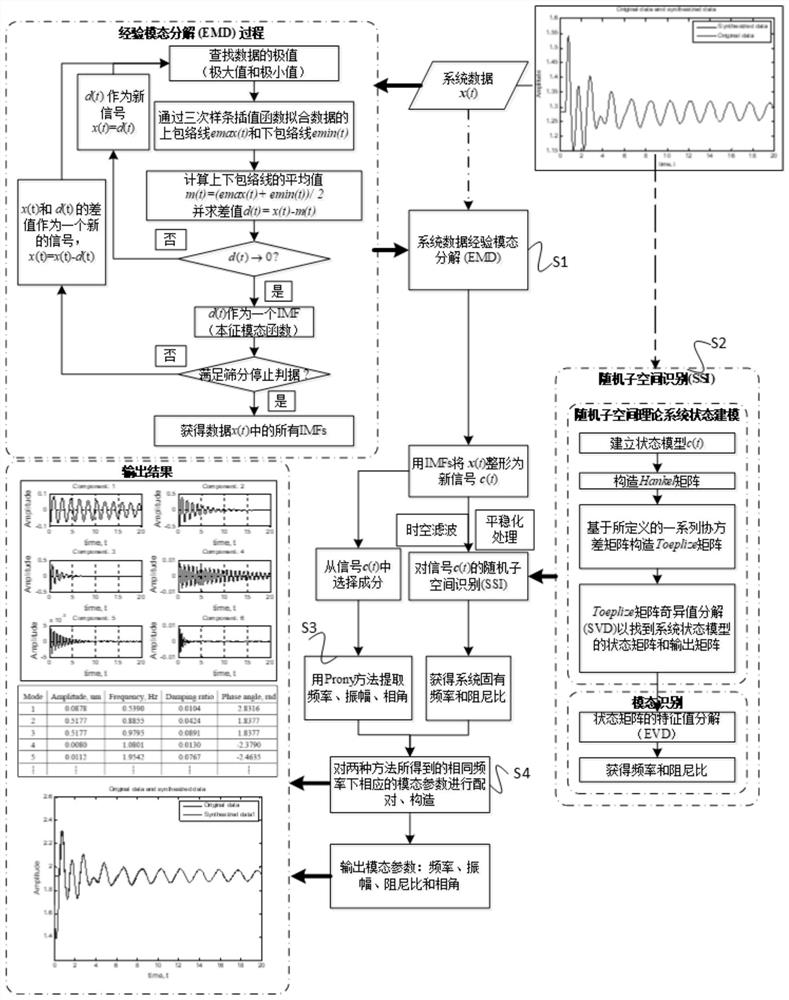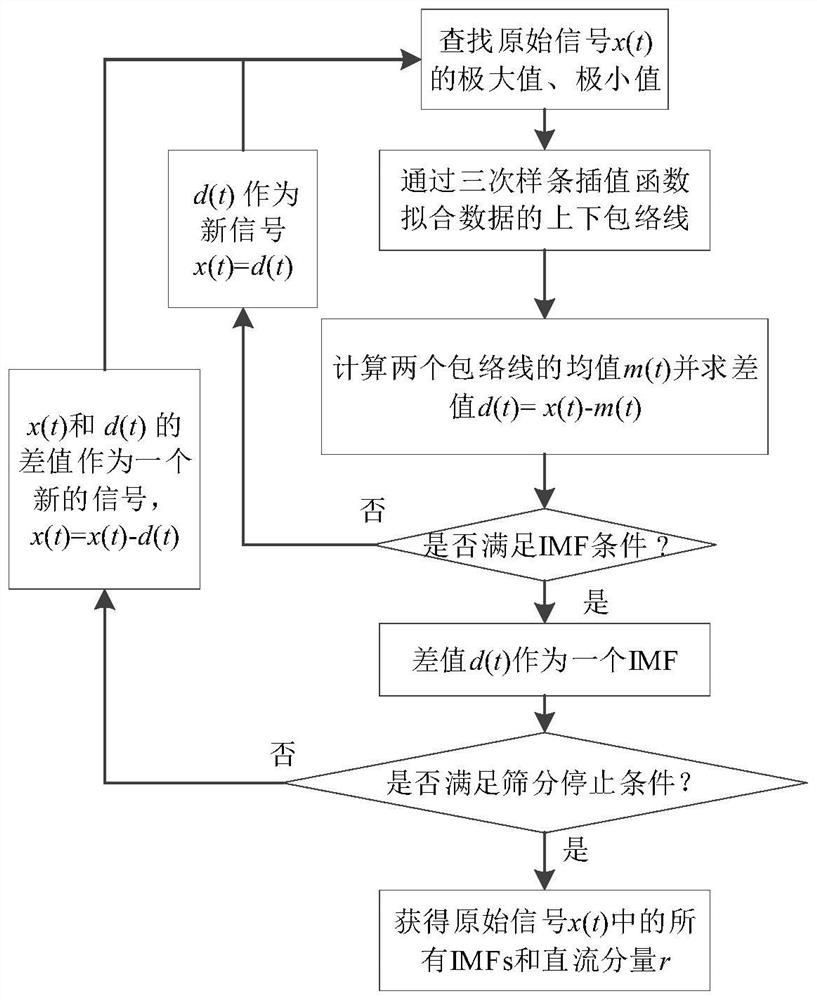Method for identifying modal parameters of oscillation signals
A technology of modal parameters and oscillating signals, which is applied to pattern recognition in signals, character and pattern recognition, instruments, etc., can solve problems such as slow calculation speed, large influence by noise, and uncertain order determination, and achieve the goal of overcoming noise Sensitivity, high-frequency noise elimination effect
- Summary
- Abstract
- Description
- Claims
- Application Information
AI Technical Summary
Problems solved by technology
Method used
Image
Examples
Embodiment
[0100] A method for identifying the modal parameters of an oscillating signal, such as figure 1 shown, including the following steps:
[0101] S1: Obtain the original signal of the system, process the original signal through the empirical mode decomposition method, and obtain a new signal.
[0102] In this embodiment, the acquired original signal is a group of low-frequency oscillation sampling signals, the sampling frequency is 100 Hz, the sampling time is 0-20 s, and there are 2000 sampling points in total.
[0103] Such as figure 2 As shown, step S1 specifically includes:
[0104] S11: Deriving the original signal x(t) of the system, and extracting the extreme value of x(t);
[0105] S12: Fit the upper and lower envelopes of x(t), and obtain the maximum value e of the envelope max (t) and the minimum e mim (t);
[0106] In this embodiment, a cubic spline interpolation function is used to fit the upper envelope and the lower envelope.
[0107] S13: Calculate the enve...
PUM
 Login to View More
Login to View More Abstract
Description
Claims
Application Information
 Login to View More
Login to View More - R&D
- Intellectual Property
- Life Sciences
- Materials
- Tech Scout
- Unparalleled Data Quality
- Higher Quality Content
- 60% Fewer Hallucinations
Browse by: Latest US Patents, China's latest patents, Technical Efficacy Thesaurus, Application Domain, Technology Topic, Popular Technical Reports.
© 2025 PatSnap. All rights reserved.Legal|Privacy policy|Modern Slavery Act Transparency Statement|Sitemap|About US| Contact US: help@patsnap.com



